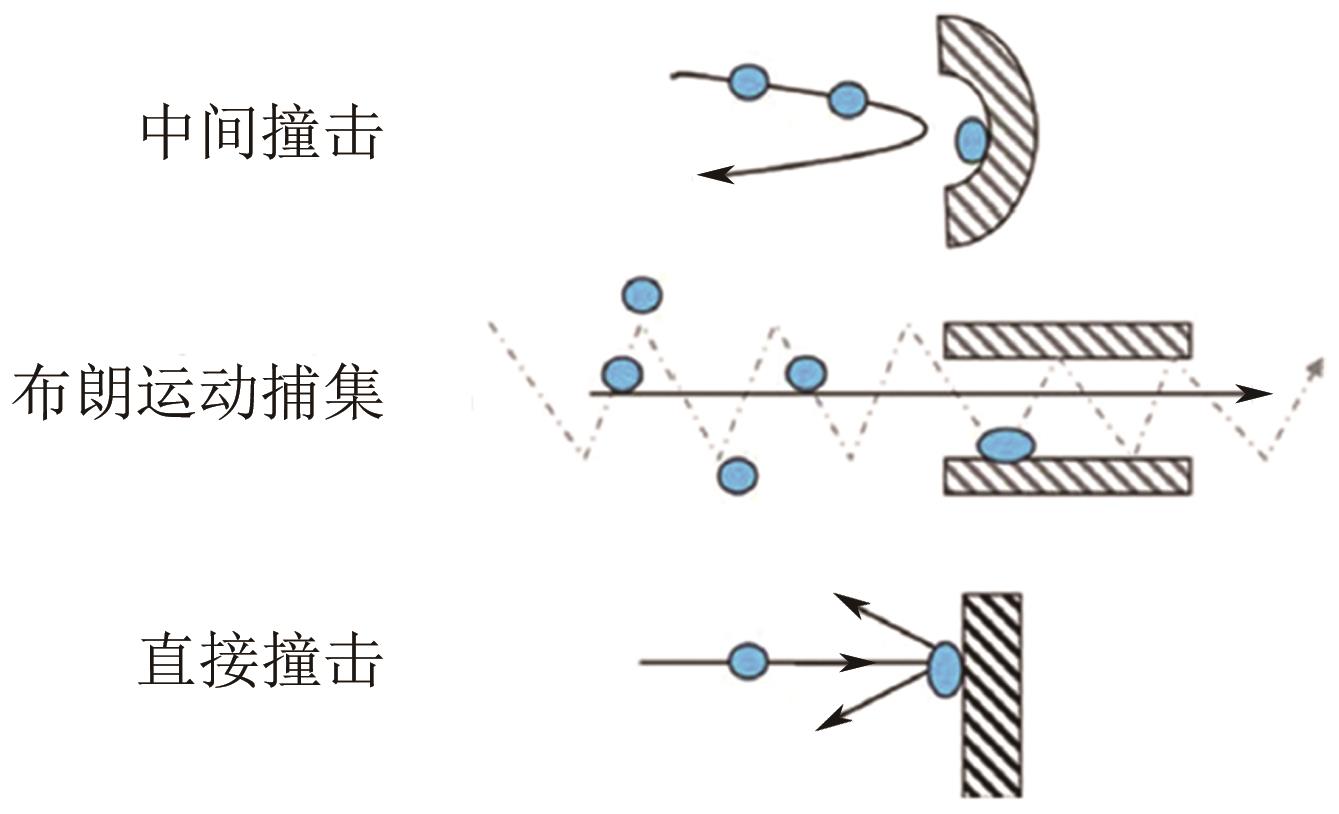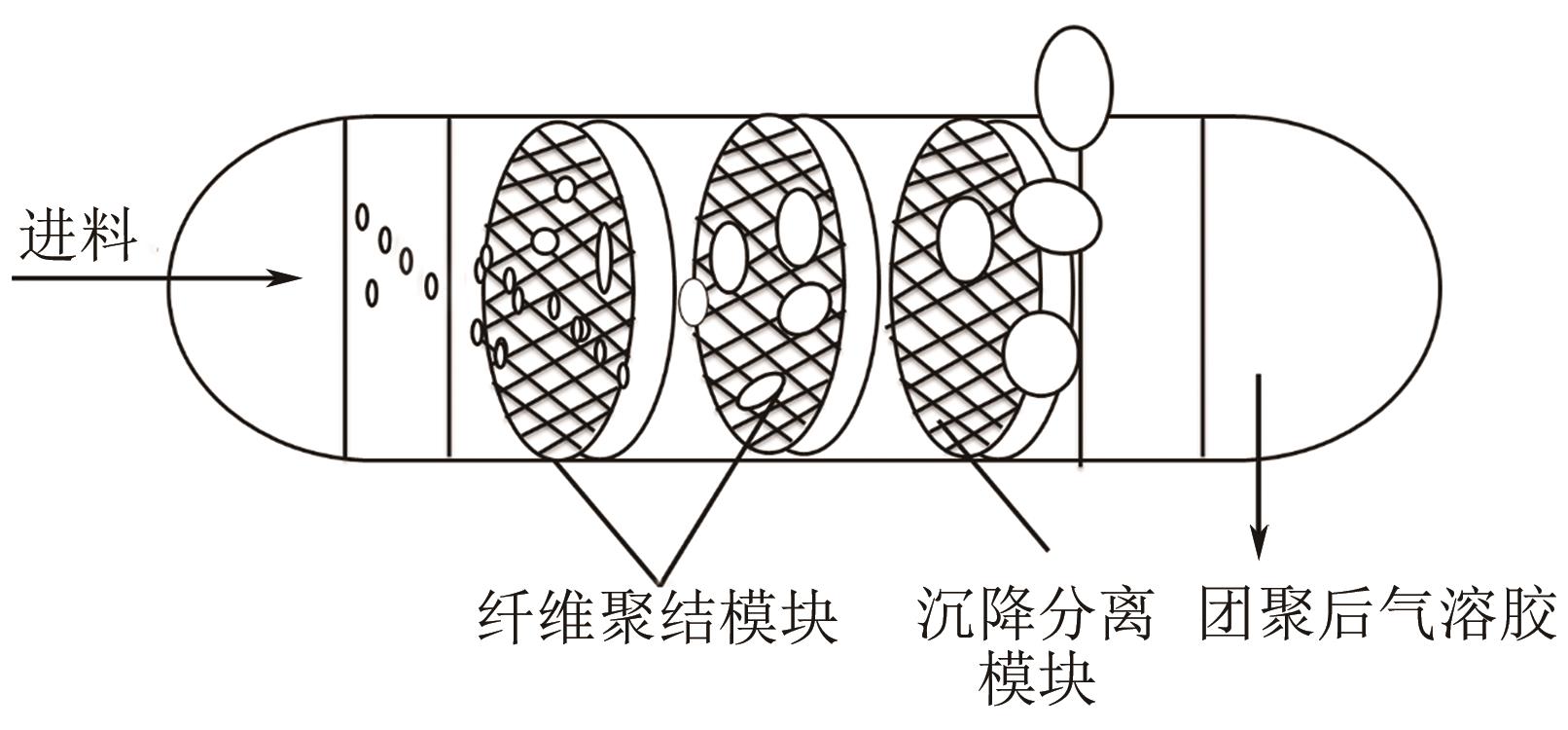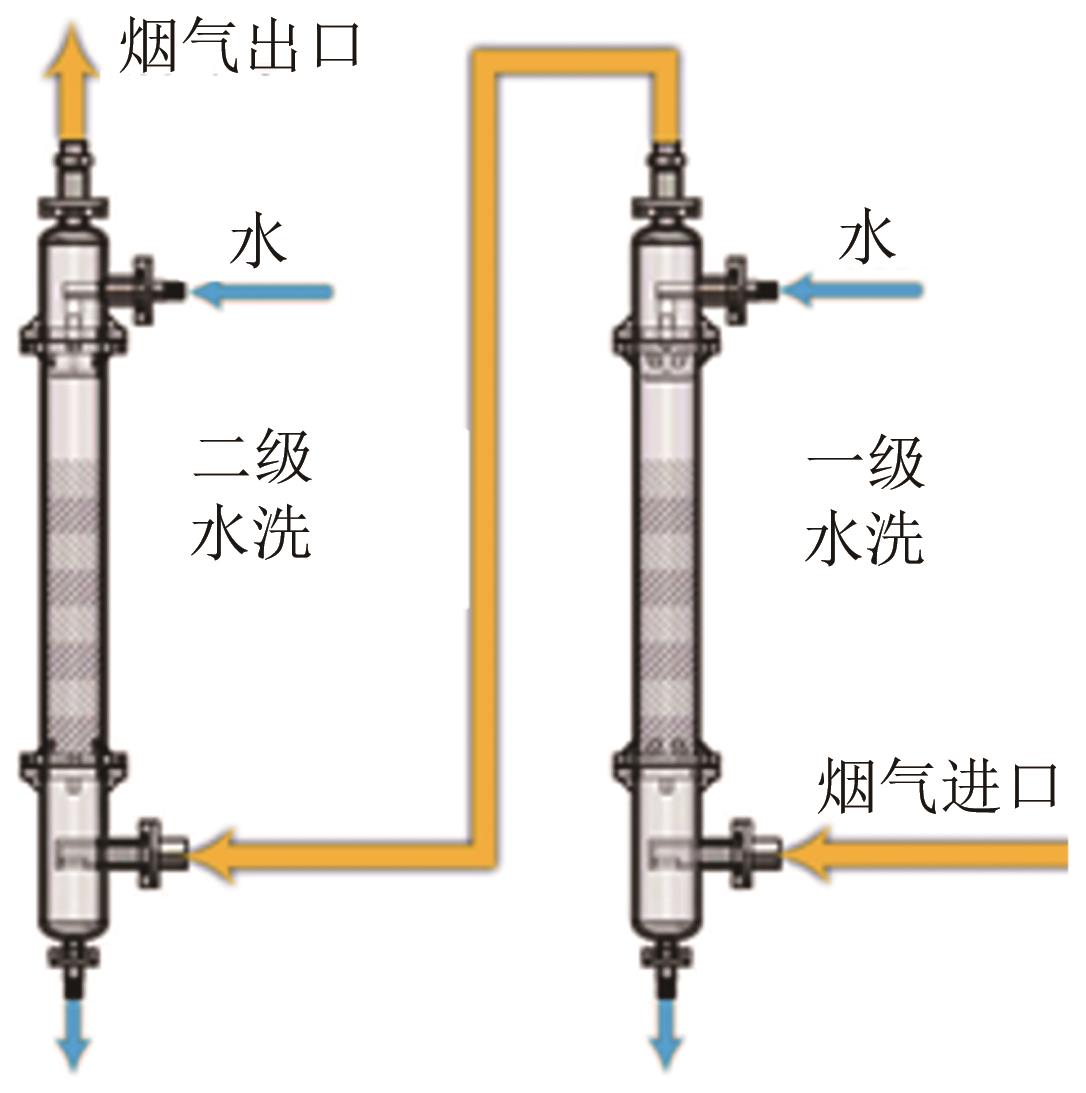化工进展 ›› 2024, Vol. 43 ›› Issue (8): 4562-4570.DOI: 10.16085/j.issn.1000-6613.2023-1205
• 资源与环境化工 • 上一篇
化学吸收法胺液逃逸控制技术研究进展
陆诗建1,2,3( ), 张娟娟1,2,3(
), 张娟娟1,2,3( ), 杨菲1,2,3, 刘玲1,2,3, 陈思铭1,2,3, 康国俊1,2,3, 房芹芹4
), 杨菲1,2,3, 刘玲1,2,3, 陈思铭1,2,3, 康国俊1,2,3, 房芹芹4
- 1.中国矿业大学碳中和研究院,江苏 徐州 221116
2.中国矿业大学江苏省煤基温室气体减排与资源化利用 重点实验室,江苏 徐州 221116
3.中国矿业大学化工学院,江苏 徐州 221116
4.东营市技师学院,山东 东营 257091
-
收稿日期:2023-07-16修回日期:2023-08-09出版日期:2024-08-15发布日期:2024-09-02 -
通讯作者:陆诗建,张娟娟 -
作者简介:陆诗建(1984—),博士,研究员,研究方向为CCUS与废气治理技术。E-mail:lushijian@cumt.edu.cn。 -
基金资助:政府间国际科技创新合作项目(2022YFE0115800);江苏省科技厅科技项目-碳达峰碳中和科技创新专项项目(BE2022613);江苏省煤基温室气体减排与资源化利用重点实验室创新能力建设专项(2020ZDZZ01A)
Research progress of amine escape control technology by chemical absorption method
LU Shijian1,2,3( ), ZHANG Juanjuan1,2,3(
), ZHANG Juanjuan1,2,3( ), YANG Fei1,2,3, LIU Ling1,2,3, CHEN Siming1,2,3, KANG Guojun1,2,3, FANG Qinqin4
), YANG Fei1,2,3, LIU Ling1,2,3, CHEN Siming1,2,3, KANG Guojun1,2,3, FANG Qinqin4
- 1.Institute of Carbon Neutralization, China University of Mining and Technology, Xuzhou 221116, Jiangsu, China
2.Jiangsu Key Laboratory of Coal-based Greenhouse Gas Control and Utilization, China University of Mining and Technology, Xuzhou 221116, Jiangsu, China
3.School of Chemical Engineering, China University of Mining and Technology, Xuzhou 221116, Jiangsu, China
4.Dongying Technician College, Dongying 257091, Shandong, China
-
Received:2023-07-16Revised:2023-08-09Online:2024-08-15Published:2024-09-02 -
Contact:LU Shijian, ZHANG Juanjuan
摘要:
CO2化学吸收法吸收剂及其降解产物的逃逸会导致吸收剂成本变高以及胺类排放污染大气,带来运行成本增加和环境污染。本文主要介绍了胺逃逸类型、原理及逃逸控制方法。文中指出:水洗和传统除雾器为目前常用的控制方法,可高效率去除气体和物理夹带逃逸,但气溶胶由于粒径小、逃逸量大带来的问题还未得到很好的解决。目前较为常用的控制方法有加大分离设备、控制运行参数、添加助剂、中间冷却法等方法,未来的发展趋势仍将放在物理方法上,如急冷、高频电场等,在不改变前期反应条件的基础上,在吸收塔或水洗塔后对逃逸气体进行控制。在兼顾CO2吸收法捕集效率的前提下提高经济效益和环境效益,为工业发展提供技术支持。
中图分类号:
引用本文
陆诗建, 张娟娟, 杨菲, 刘玲, 陈思铭, 康国俊, 房芹芹. 化学吸收法胺液逃逸控制技术研究进展[J]. 化工进展, 2024, 43(8): 4562-4570.
LU Shijian, ZHANG Juanjuan, YANG Fei, LIU Ling, CHEN Siming, KANG Guojun, FANG Qinqin. Research progress of amine escape control technology by chemical absorption method[J]. Chemical Industry and Engineering Progress, 2024, 43(8): 4562-4570.
| 排放类型 | 形态 | 产生原因 | 吸收塔后胺排放数量级/10-6 | 控制难点 |
|---|---|---|---|---|
| 物理夹带 | 液滴 D≥100μm | 气液接触时部分吸收剂被气流携带 | <1 | — |
| 气体 | 气态 | 吸收剂及其降解产物挥发 | 0~100 | NH3等降解产物水溶速率较慢 |
| 气溶胶 | 气溶胶颗粒 100μm>D>1nm | 吸收塔内非均相成核、均相成核、气泡破裂等 | 0~1000 | D<3μm 气溶胶颗粒容易穿过水洗或除雾器,难以控制 |
表1 CO2化学吸收系统污染物排放类型
| 排放类型 | 形态 | 产生原因 | 吸收塔后胺排放数量级/10-6 | 控制难点 |
|---|---|---|---|---|
| 物理夹带 | 液滴 D≥100μm | 气液接触时部分吸收剂被气流携带 | <1 | — |
| 气体 | 气态 | 吸收剂及其降解产物挥发 | 0~100 | NH3等降解产物水溶速率较慢 |
| 气溶胶 | 气溶胶颗粒 100μm>D>1nm | 吸收塔内非均相成核、均相成核、气泡破裂等 | 0~1000 | D<3μm 气溶胶颗粒容易穿过水洗或除雾器,难以控制 |
| 控制方法 | 优缺点 |
|---|---|
| 改进吸收剂性质 | 通过研发具有较低挥发性的吸收剂,可以减少胺逃逸。优点是技术相对简单,不需要增加额外的设备,能够有效降低胺的挥发性;缺点是可能会对吸收剂的捕集性能和成本产生一定的影响 |
| 加大分离设备 | 增加分离设备的尺寸和效率,使得气相中的胺能够更好地被捕集和回收,减少胺逃逸。优点是有效降低胺的排放,提高捕集效率;缺点是需要增加投资和能耗,对系统运行成本有一定影响 |
| 使用新型捕集材料 | 研发新型捕集材料,如吸附剂和膜分离技术,可以实现更高效的CO2捕集,减少胺逃逸。优点是具有更高的选择性和捕集效率,能够适应不同工况需求;缺点是研发和应用新材料可能存在技术和经济风险 |
| 控制运行参数 | 调整吸收塔的运行参数,如温度、压力和流速等,以控制胺的挥发和逃逸。优点是技术相对成熟,能够快速实施;缺点是需要对系统进行精细调控,可能会影响其他工艺参数和能耗 |
| 应用新技术 | 利用先进的控制技术,如智能监测和自动控制系统,实时监测和调整胺逃逸情况。优点是能够实现智能化运行,提高系统稳定性和减少人工干预;缺点是投资和技术需求较高 |
表2 胺逃逸已使用控制方法及其优缺点
| 控制方法 | 优缺点 |
|---|---|
| 改进吸收剂性质 | 通过研发具有较低挥发性的吸收剂,可以减少胺逃逸。优点是技术相对简单,不需要增加额外的设备,能够有效降低胺的挥发性;缺点是可能会对吸收剂的捕集性能和成本产生一定的影响 |
| 加大分离设备 | 增加分离设备的尺寸和效率,使得气相中的胺能够更好地被捕集和回收,减少胺逃逸。优点是有效降低胺的排放,提高捕集效率;缺点是需要增加投资和能耗,对系统运行成本有一定影响 |
| 使用新型捕集材料 | 研发新型捕集材料,如吸附剂和膜分离技术,可以实现更高效的CO2捕集,减少胺逃逸。优点是具有更高的选择性和捕集效率,能够适应不同工况需求;缺点是研发和应用新材料可能存在技术和经济风险 |
| 控制运行参数 | 调整吸收塔的运行参数,如温度、压力和流速等,以控制胺的挥发和逃逸。优点是技术相对成熟,能够快速实施;缺点是需要对系统进行精细调控,可能会影响其他工艺参数和能耗 |
| 应用新技术 | 利用先进的控制技术,如智能监测和自动控制系统,实时监测和调整胺逃逸情况。优点是能够实现智能化运行,提高系统稳定性和减少人工干预;缺点是投资和技术需求较高 |
| 1 | 陆诗建, 贡玉萍, 刘玲, 等. 有机胺CO2吸收技术研究现状与发展方向[J]. 洁净煤技术, 2022, 28(9): 44-54. |
| LU Shijian, GONG Yuping, LIU Ling, et al. Research status and future development direction of CO2 absorption technology for organic amine[J]. Clean Coal Technology, 2022, 28(9): 44-54. | |
| 2 | 陆诗建, 张娟娟, 刘玲, 等. 工业源二氧化碳捕集技术进展与发展趋势[J]. 现代化工, 2022, 42(11): 59-64. |
| LU Shijian, ZHANG Juanjuan, LIU Ling, et al. Progress and development trend of industry-sourced carbon dioxide capture technology[J]. Modern Chemical Industry, 2022, 42(11): 59-64. | |
| 3 | 卢静. 美国能源部100万吨CO2捕集与封存项目[J]. 中国电力, 2015, 48(2): 110. |
| LU Jing. 1 million tons of CO2 capture and storage project of US Department of Energy[J]. Electric Power, 2015, 48(2): 110. | |
| 4 | 方圆. 落实“双碳”目标化工建设企业大有可为——陕西国华锦界15万t/a二氧化碳捕集(CCS)示范工程建设纪实[J]. 石油化工建设, 2021, 43(5): 1-5. |
| FANG Yuan. There is a bright future for chemical construction enterprises to achieve the goal of “double carbon”—On-the-spot record of 150, 000 t/a carbon dioxide capture (CCS) demonstration project in Shanxi Guohua Jinjie[J]. Petroleum and Chemical Construction, 2021, 43(5): 1-5. | |
| 5 | 陆诗建, 刘苗苗, 刘玲, 等. 烟气胺法CO2捕集技术进展与未来发展趋势[J]. 化工进展, 2023, 42(1): 435-444. |
| LU Shijian, LIU Miaomiao, LIU Ling, et al. Progress and future development trend of CO2 capture technology by amine method in flue gas[J]. Chemical Industry and Engineering Progress, 2023, 42(1): 435-444. | |
| 6 | LIANG Wanqiao, HUANG Jihuan, XIAO Penny, et al. Amine-immobilized HY zeolite for CO2 capture from hot flue gas[J]. Chinese Journal of Chemical Engineering, 2022, 43: 335-342. |
| 7 | LIU Jialin, WONG David Shan-Hill, CHEN Dingsou. Energy-saving performance of the process modifications for carbon capture by diluted aqueous ammonia[J]. Journal of the Taiwan Institute of Chemical Engineers, 2022, 130: 103966. |
| 8 | 陆诗建, 张媛媛, 吴文华, 等. 百万吨级CO2捕集项目亚硝胺污染物扩散健康风险评估[J]. 化工进展, 2023, 42(6): 3209-3216. |
| LU Shijian, ZHANG Yuanyuan, WU Wenhua, et al. Health risk assessment of nitrosamine pollutant diffusion in a million ton CO2 capture project[J]. Chemical Industry and Engineering Progress, 2023, 42(6): 3209-3216. | |
| 9 | ZHANG Minkai, GUO Yincheng. Rate based modeling of absorption and regeneration for CO2 capture by aqueous ammonia solution[J]. Applied Energy, 2013, 111: 142-152. |
| 10 | SLAVU Nela, BADEA Adrian, DINCA Cristian. Optimal parameters of the aqueous ammonia process for CO2 separation[C]//2019 International Conference on ENERGY and ENVIRONMENT (CIEM). October, 17-19, 2019, Timisoara, Romania. IEEE, 2019: 64-68. |
| 11 | LI Wei, LANDON James, IRVIN Bradley, et al. Use of carbon steel for construction of post-combustion CO2 capture facilities: A pilot-scale corrosion study[J]. Industrial & Engineering Chemistry Research, 2017, 56(16): 4792-4803. |
| 12 | MA Shuangchen, CHEN Gongda, GAO Ran, et al. Experimental research of ammonia escape in CO2 absorption using ammonia solution in wetted-wall column[J]. International Journal of Greenhouse Gas Control, 2016, 51: 254-259. |
| 13 | SPIETZ T, STEC M, TATARCZUK A, et al. Reduction of amines emission and their volatile degradation products[J]. Chemik Science-Technique-Market, 2015, 69(10): 625-634. |
| 14 | 刘飞, 祁志福, 方梦祥, 等. 用于烟气二氧化碳捕集的有机胺挥发性研究进展[J]. 热力发电, 2022, 51(1): 33-43. |
| LIU Fei, QI Zhifu, FANG Mengxiang, et al. Research progress of amine volatility for carbon dioxide capture from flue gas[J]. Thermal Power Generation, 2022, 51(1): 33-43. | |
| 15 | 方梦祥, 狄闻韬, 易宁彤, 等. CO2化学吸收系统污染物排放与控制研究进展[J]. 洁净煤技术, 2021, 27(2): 8-16. |
| FANG Mengxiang, DI Wentao, YI Ningtong, et al. Research progress on pollutant emission and control from CO2 chemical absorption system[J]. Clean Coal Technology, 2021, 27(2): 8-16. | |
| 16 | SILVA Eirik F DA, KOLDERUP Herman, GOETHEER Earl, et al. Emission studies from a CO2 capture pilot plant[J]. Energy Procedia, 2013, 37: 778-783. |
| 17 | NGUYEN Thu, HILLIARD Marcus, ROCHELLE Gary. Volatility of aqueous amines in CO2 capture[J]. Energy Procedia, 2011, 4: 1624-1630. |
| 18 | KHAKHARIA Purvil, BRACHERT Leonie, MERTENS Jan, et al. Understanding aerosol based emissions in a Post Combustion CO2 Capture process: Parameter testing and mechanisms[J]. International Journal of Greenhouse Gas Control, 2015, 34: 63-74. |
| 19 | WANG Fu, ZHAO Jun, MIAO He, et al. Current status and challenges of the ammonia escape inhibition technologies in ammonia-based CO2 capture process[J]. Applied Energy, 2018, 230: 734-749. |
| 20 | 易宁彤, 狄闻韬, 方梦祥, 等. CO2化学吸收系统有机胺排放与控制研究[C]//第二十四届大气污染防治技术研讨会论文集. 广州, 2020: 157-163. |
| YI Ningtong, DI Wentao, Fang mengxiang, et al. Study on emission and control of organic amines in CO2 chemical absorption system[C]//Proceedings of the 24th Symposium on air pollution prevention and control technology. Guangzhou, 2020: 157-163. | |
| 21 | 林海周, 裴爱国, 方梦祥. 燃煤电厂烟气二氧化碳胺法捕集工艺改进研究进展[J]. 化工进展, 2018, 37(12): 4874-4886. |
| LIN Haizhou, PEI Aiguo, FANG Mengxiang. Progress of research on process modifications for amine solvent-based post combustion CO2 capture from coal-fired power plant[J]. Chemical Industry and Engineering Progress, 2018, 37(12): 4874-4886. | |
| 22 | YU Hai, QI Guojie, WANG Shujuan, et al. Results from trialling aqueous ammonia-based post-combustion capture in a pilot plant at Munmorah Power Station: Gas purity and solid precipitation in the stripper[J]. International Journal of Greenhouse Gas Control, 2012, 10: 15-25. |
| 23 | KHAKHARIA Purvil, HUIZINGA Arjen, JURADO LOPEZ Cristina, et al. Acid wash scrubbing as a countermeasure for ammonia emissions from a postcombustion CO2 capture plant[J]. Industrial & Engineering Chemistry Research, 2014, 53(33): 13195-13204. |
| 24 | MA Shuangchen, SONG Huihui, WANG Mengxuan, et al. Research on mechanism of ammonia escaping and control in the process of CO2 capture using ammonia solution[J]. Chemical Engineering Research and Design, 2013, 91(7): 1327-1334. |
| 25 | 马修元, 申智勇, 李志强. 湿式电除尘器粉尘颗粒流动特性数值模拟[J]. 热力发电, 2017, 46(9): 72-77. |
| MA Xiuyuan, SHEN Zhiyong, LI Zhiqiang. Numerical simulation on flow characteristics of dust particles in a wet electrostatic precipitator[J]. Thermal Power Generation, 2017, 46(9): 72-77. | |
| 26 | KAMIJO Takashi, KAJIYA Yoshinori, ENDO Takahiko, et al. SO3 impact on amine emission and emission reduction technology[J]. Energy Procedia, 2013, 37: 1793-1796. |
| 27 | KHAKHARIA Purvil, KVAMSDAL Hanne M, SILVA Eirik F DA, et al. Field study of a Brownian Demister Unit to reduce aerosol based emission from a Post Combustion CO2 Capture plant[J]. International Journal of Greenhouse Gas Control, 2014, 28: 57-64. |
| 28 | MERTENS Jan, KHAKHARIA P, ROGIERS Pieter, et al. Prevention of mist formation in amine based carbon capture: Field testing using a wet ElectroStatic precipitator (WESP) and a gas-gas heater (GGH)[J]. Energy Procedia, 2017, 114: 987-999. |
| 29 | MOSER Peter, SCHMIDT Sandra, STAHL Knut, et al. Demonstrating emission reduction - results from the post-combustion capture pilot plant at niederaussem[J]. Energy Procedia, 2014, 63: 902-910. |
| 30 | MA Shuangchen, SONG Huihui, ZANG Bin, et al. Experimental study on additives inhibiting ammonia escape in carbon capture process using ammonia method[J]. Chemical Engineering Research and Design, 2013, 91(12): 2775-2781. |
| 31 | YANG Jitao, GAO Hanyang, HU Guoxin, et al. Novel process of removal of sulfur dioxide by aqueous ammonia–fulvic acid solution with ammonia escape inhibition[J]. Energy & Fuels, 2016, 30(4): 3205-3218. |
| 32 | MA Shuangchen, CHEN Gongda, HAN Tingting, et al. Experimental study on the effect of Ni(II) additive on ammonia escape in CO2 capture using ammonia solution[J]. International Journal of Greenhouse Gas Control, 2015, 37: 249-255. |
| 33 | MA Shuangchen, SONG Huihui, CHEN Gongda, et al. Cobalt(Ⅱ) as an additive inhibiting ammonia escape in carbon capture using ammonia solution[J]. Greenhouse Gases: Science and Technology, 2013, 3(5): 392-396. |
| 34 | KIM Yoori, Seong-Rin LIM, PARK Jong Moon. The effects of Cu(Ⅱ) ion as an additive on NH3 loss and CO2 absorption in ammonia-based CO2 capture processes[J]. Chemical Engineering Journal, 2012, 211/212: 327-335. |
| 35 | MA Shuangchen, SONG Huihui, ZANG Bin, et al. Experimental study of Co(Ⅱ) additive on ammonia escape in carbon capture using renewable ammonia[J]. Chemical Engineering Journal, 2013, 234: 430-436. |
| 36 | MAJEED Hammad, SVENDSEN Hallvard F. Effect of water wash on mist and aerosol formation in absorption column[J]. Chemical Engineering Journal, 2018, 333: 636-648. |
| 37 | KARIMI Mehdi, HILLESTAD Magne, SVENDSEN Hallvard F. Investigation of intercooling effect in CO2 capture energy consumption[J]. Energy Procedia, 2011, 4: 1601-1607. |
| 38 | MAJEED Hammad, SVENDSEN Hallvard F. Characterization of aerosol emissions from CO2 capture plants treating various power plant and industrial flue gases[J]. International Journal of Greenhouse Gas Control, 2018, 74: 282-295. |
| 39 | GUPTA Vijay, MOBLEY Paul, TANTHANA Jak, et al. Aerosol emissions from water-lean solvents for post-combustion CO2 capture[J]. International Journal of Greenhouse Gas Control, 2021, 106: 103284. |
| 40 | FULK Steven M, ROCHELLE Gary T. Modeling aerosols in amine-based CO2 capture[J]. Energy Procedia, 2013, 37: 1706-1719. |
| 41 | 黄杰, 邹丽蓉. 影响静电除尘器除尘效率的关键因素探究[J]. 电气技术与经济, 2019(3): 52-54. |
| HUANG Jie, ZOU Lirong. Study on key factors affecting dust removal efficiency of electrostatic precipitator[J]. Electrical Equipment and Economy, 2019(3): 52-54. | |
| 42 | 王金意, 牛红伟, 刘练波, 等. 燃煤电厂烟气新型CO2吸收剂开发与工程应用[J]. 热力发电, 2021, 50(1): 54-61. |
| WANG Jinyi, NIU Hongwei, LIU Lianbo, et al. Development and engineering application of new absorption solvent for CO2 capture from flue gas of coal-fired power plant[J]. Thermal Power Generation, 2021, 50(1): 54-61. | |
| 43 | 王浩霖. 烟气气体成分对静电除尘器放电及脱除效率影响的研究[D]. 杭州: 浙江大学, 2020: 18-20. |
| WANG Haolin. Study on the effect of flue gas composition on the discharge and removal efficiency of electrostatic precipitator[D].Hangzhou: Zhejiang University, 2020: 18-20. | |
| 44 | KARUNARATHNE Sumudu S, EIMER Dag A, ØI Lars E. Density, viscosity and free energy of activation for viscous flow of CO2 loaded 2-amino-2-methyl-1-propanol (AMP), monoethanol amine (MEA) and H2O mixtures[J]. Journal of Molecular Liquids, 2020, 311: 113286. |
| 45 | 沈丹. 惯电耦合脱除有机胺气溶胶效果研究[D]. 杭州: 浙江大学, 2021. |
| SHEN Dan. Effects of inertial electrical coupling on removal of organic amine aerosols[D]. Hangzhou: Zhejiang University, 2021. | |
| 46 | 沈丹, 骆仲泱, 方梦祥, 等. 电场对有机胺气溶胶作用机理与实验研究[J]. 热力发电, 2021, 50(7): 137-142. |
| SHEN Dan, LUO Zhongyang, FANG Mengxiang, et al. Mechanism and experimental study on the effect of electric field on organic amine aerosol[J]. Thermal Power Generation, 2021, 50(7): 137-142. | |
| 47 | ANDERLOHR C, BRACHERT L, MERTENS J, et al. Collection and generation of sulfuric acid aerosols in a wet electrostatic precipitator[J]. Aerosol Science and Technology, 2015, 49(3): 144-151. |
| 48 | FUJITA Koshito, MURAOKA Daigo, KASEDA Tetsuya, et al. Impact of the aerosol particle included in actual flue gas on amine mist formation/growth in the post-combustion capture pilot plant[J]. Energy Procedia, 2017, 114: 930-938. |
| 49 | KHAKHARIA P, MERTENS J, ABU-ZAHRA M R M, et al. Overview of aerosols in post-combustion CO2 capture[M]//Absorption-based post-combustion capture of carbon dioxide. Amsterdam: Elsevier, 2016: 465-485. |
| 50 | LI Chao, YI Ningtong, FANG Mengxiang, et al. Solvent emissions control in large scale chemical absorption CO2 capture plant[J]. International Journal of Greenhouse Gas Control, 2021, 111: 103444. |
| 51 | 孙盖南, 刘懿谦, 卢浩, 等. 新型纤维聚结污水除油技术实验及应用研究[J]. 水处理技术, 2019, 45(9): 110-114. |
| SUN Gainan, LIU Yiqian, LU Hao, et al. Experiment and application study on a novel fibrous coalescence technique for oily sewage treatment[J]. Technology of Water Treatment, 2019, 45(9): 110-114. |
| [1] | 陈崇明, 陈秋, 宫云茜, 车凯, 郁金星, 孙楠楠. 分子筛基CO2吸附剂研究进展[J]. 化工进展, 2023, 42(S1): 411-419. |
| [2] | 杨莹, 侯豪杰, 黄瑞, 崔煜, 王兵, 刘健, 鲍卫仁, 常丽萍, 王建成, 韩丽娜. 利用煤焦油中酚类物质Stöber法制备碳纳米球用于CO2吸附[J]. 化工进展, 2023, 42(9): 5011-5018. |
| [3] | 王久衡, 荣鼐, 刘开伟, 韩龙, 水滔滔, 吴岩, 穆正勇, 廖徐情, 孟文佳. 水蒸气强化纤维素模板改性钙基吸附剂固碳性能及强度[J]. 化工进展, 2023, 42(6): 3217-3225. |
| [4] | 陆诗建, 张媛媛, 吴文华, 杨菲, 刘玲, 康国俊, 李清方, 陈宏福, 王宁, 王风, 张娟娟. 百万吨级CO2捕集项目亚硝胺污染物扩散健康风险评估[J]. 化工进展, 2023, 42(6): 3209-3216. |
| [5] | 桑伟, 唐建峰, 花亦怀, 陈洁, 孙培源, 许义飞. 物理溶剂及有机胺的性质对相变吸收性能的影响[J]. 化工进展, 2023, 42(4): 2151-2159. |
| [6] | 孔祥如, 张肖阳, 孙鹏翔, 崔琳, 董勇. 直接空气捕碳固体多孔材料的研究进展[J]. 化工进展, 2023, 42(3): 1471-1483. |
| [7] | 胡鹏, 赵丹, 纪红兵. 温控构筑仿生契合辨识机制强化合成气提纯[J]. 化工进展, 2023, 42(12): 6133-6135. |
| [8] | 曹明敏, 韩铖乐, 杨芳, 陈玉焕. 离子液体/金属有机框架复合材料捕集分离CO2[J]. 化工进展, 2023, 42(11): 5831-5841. |
| [9] | 陆诗建, 刘苗苗, 刘玲, 康国俊, 毛松柏, 王风, 张娟娟, 贡玉萍. 烟气胺法CO2捕集技术进展与未来发展趋势[J]. 化工进展, 2023, 42(1): 435-444. |
| [10] | 孟令玎, 毛梦雷, 廖奇勇, 孟子晖, 刘文芳. 碳酸酐酶和甲酸脱氢酶的稳定性研究进展[J]. 化工进展, 2022, 41(S1): 436-447. |
| [11] | 方龙龙, 郑文姬, 宁梦佳, 张明扬, 杨雨晴, 代岩, 贺高红. 功能化Zr-MOF强化混合基质膜CO2分离[J]. 化工进展, 2022, 41(9): 4954-4962. |
| [12] | 陆诗建, 刘玲, 刘滋武, 郭伯文, 俞徐林, 梁艳, 赵东亚, 朱全民. AEP-DPA-CuO相变纳米流体吸收CO2稳定性[J]. 化工进展, 2022, 41(8): 4555-4561. |
| [13] | 黄晟, 王静宇, 李振宇. 碳中和目标下石油与化学工业绿色低碳发展路径分析[J]. 化工进展, 2022, 41(4): 1689-1703. |
| [14] | 吴佳佳, 潘振, 商丽艳, 孙秀丽, 孙超, 孙祥广. 中空纤维膜接触器中N,N-二甲基乙醇胺吸收CO2的特性[J]. 化工进展, 2022, 41(4): 2132-2139. |
| [15] | 张陆, 杨声. 低温甲醇洗碳捕集改进与优化[J]. 化工进展, 2022, 41(11): 6167-6175. |
| 阅读次数 | ||||||
|
全文 |
|
|||||
|
摘要 |
|
|||||





